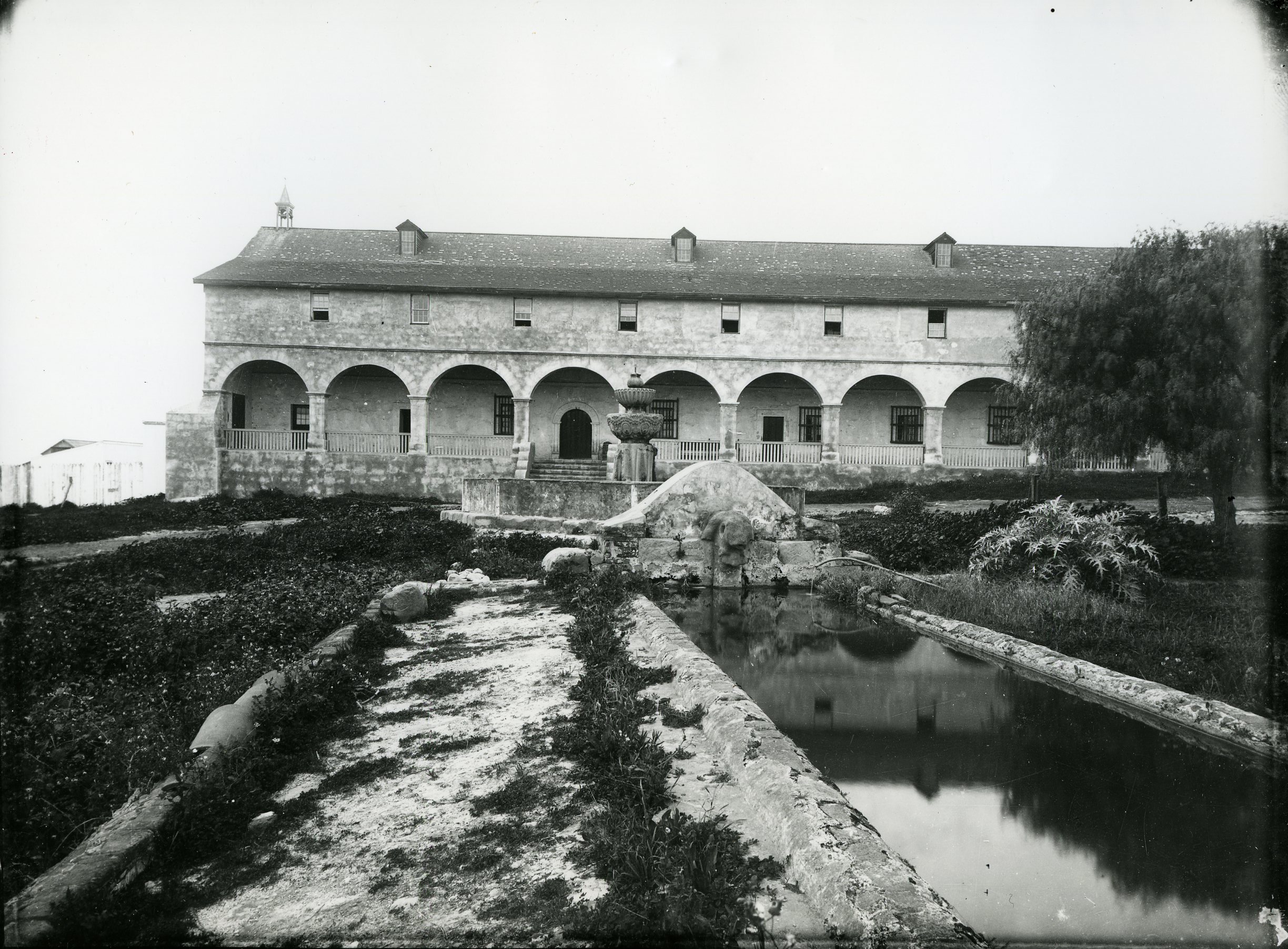Water Systems in Early Days
Santa Barbara's Padres Faced Water Shortages

Santa Barbarans realize that water is a precious and, at times, scarce commodity. An enduring theme of this community’s history has been the search for an adequate water supply — from the building of the Royal Presidio aqueduct to the construction of the desalinization plant. The outstanding early relic of this search is the remains of the water system of the Old Mission.
Very soon after the founding of Mission Santa Barbara in 1786 came the realization that the seasonal flow of Mission Creek and the yield from rainwater and springs would not be enough to satisfy the needs of the growing community of padres and Chumash neophytes. A drought in the mid-1790s severely affected agricultural yields, and soon after the padres began planning for what eventually became perhaps the most elaborate water system of any of the California missions.
Construction did not begin until 1806. The centerpiece of the system, completed in 1807, was the Mission Creek dam, today located in the Santa Barbara Botanic Garden. Built by Chumash laborers with sandstone and lime mortar, the dam stretches over 100 feet across the creek and is 23 feet high on the south side. The dam could store a supply of water 20 feet deep extending 100 yards up the creek and directed this supply to an aqueduct system for delivery to the mission. A smaller sandstone dam, its purpose to merely divert water into another aqueduct system, was placed in Rattlesnake Canyon. This dam, too, still survives.
Sandstone and lime were also the main building materials in the aqueducts. Sometimes roof tiles were used for the bottom of the conduits; sometimes loose rocks formed the bottom. For the most part the aqueducts were open to the elements. To view parts of this system today and realize it was all done by hand is to marvel at the skill and tenacity of the builders.
The aqueducts carried the water to a number of works that today make up Mission Historical Park. The main reservoir, built in 1807, could hold 535,000 gallons and was part of the city water system until the 1980s. Just above the main reservoir was a smaller one that supplied water to power the grist mill. Construction dates of the small reservoir and mill are unclear; some sources give a date as late as 1827. Finally there was the small filter house, through which water flowed over a mix of charcoal and sandstone, to be used for domestic purposes at the mission.
Today, probably the best-known features of the water system are the lavadero (wash basin) and fountain in front of the mission’s cloister wing. Built in 1808, the fountain features a pomegranate-shaped spout, and water flows from it through a conduit shaped like the head of a grizzly bear into the lavadero, which was used as a laundry. The water supplied by this extensive system was utilized for private use, irrigation, and for livestock.
Time and urban development have taken their toll on the system. Still, one may visit the two dams, and view the reservoirs, the ruins of the filter house and mill, and portions of the aqueduct system. To hike to the dams or stroll through the ruins of the Santa Barbara Mission water system is to be transported back to the earliest days of our community.
Michael Redmon, director of research at the Santa Barbara Historical Museum, will answer your questions about Santa Barbara’s history. Write him c/o The Santa Barbara Independent, 12 East Figueroa Street, Santa Barbara, CA 93101.
Go here for more History 101 columns.



